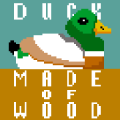Forum rules - please read before posting.
-
Midnight Bloodbath at the House of Terror
 by duckmadeofwood ·My new Pixel Art Graphic Adventure developed for #ScreamJam using Adventure Creator.
by duckmadeofwood ·My new Pixel Art Graphic Adventure developed for #ScreamJam using Adventure Creator. -
Hotspots labels showing up with Naninovel during conversations
 by Alatriste ·https://naninovel.com/guide/adventure-creator.html#setup)
by Alatriste ·https://naninovel.com/guide/adventure-creator.html#setup) -
new game menu
 by Erallie ·@ChrisIceBox
by Erallie ·@ChrisIceBox -
Action script from a mouse/cursor Roll Over
 by hollycacao ·So when I create a new C#script and name it MouseOverInteraction.cs, without doing anything else, I already get all this which you see on this picture:
by hollycacao ·So when I create a new C#script and name it MouseOverInteraction.cs, without doing anything else, I already get all this which you see on this picture: -
Adding Extra/Costume Animations like Sneakwalk or Sitting
 by Bedroomdev ·I made the C#script and Toggle key....
by Bedroomdev ·I made the C#script and Toggle key.... -
Spine Skins
 by jamesfootlight ·/// </summary> public void ChangeSkin() { Invoke("DelayedChange", 10f); } public void DelayedChange() { print("CHANGED SKIN&am
by jamesfootlight ·/// </summary> public void ChangeSkin() { Invoke("DelayedChange", 10f); } public void DelayedChange() { print("CHANGED SKIN&am -
Spine Skins
 by jamesfootlight ·</summary>public void ChangeSkin(){ Invoke("DelayedChange", 10f);}public void DelayedChange(){ print("CHANGED SKIN"); skeletonAnimation = Ki
by jamesfootlight ·</summary>public void ChangeSkin(){ Invoke("DelayedChange", 10f);}public void DelayedChange(){ print("CHANGED SKIN"); skeletonAnimation = Ki -
Spine Skins
 by jamesfootlight ·/// Info found here: http://en.esotericsoftware.com/spine-runtime-skins#Skin-changes
by jamesfootlight ·/// Info found here: http://en.esotericsoftware.com/spine-runtime-skins#Skin-changes -
Spine Skins
 by jamesfootlight ·/// </summary> public void ChangeSkin() { Invoke("DelayedChange", 10f); } public void DelayedChange() { print("CHANGED SKIN&am
by jamesfootlight ·/// </summary> public void ChangeSkin() { Invoke("DelayedChange", 10f); } public void DelayedChange() { print("CHANGED SKIN&am -
Spine Skins
 by jamesfootlight ·/// </summary> public void ChangeSkin() { skeleton.SetSkin("Clothes/Suit"); skeleton.SetSlotsToSetupPose(); // 2. Use setup pose to set base attach
by jamesfootlight ·/// </summary> public void ChangeSkin() { skeleton.SetSkin("Clothes/Suit"); skeleton.SetSlotsToSetupPose(); // 2. Use setup pose to set base attach -
Ink Integration
 by GrahamHayes ·getValue and #set are for AC variables only. So they need to be set up in AC first, I don't recommend having a corresponding variable in ink, otherwise they may end up as different values.
by GrahamHayes ·getValue and #set are for AC variables only. So they need to be set up in AC first, I don't recommend having a corresponding variable in ink, otherwise they may end up as different values. -
Ink Integration
 by thatguynm ·Also once I get the variable set up, do I need to set the value within ink before I can use it (using the #set tag)? Can I just use it like a regular ink variable, or is there a specific way I need to
by thatguynm ·Also once I get the variable set up, do I need to set the value within ink before I can use it (using the #set tag)? Can I just use it like a regular ink variable, or is there a specific way I need to -
Custom Action (Naninovel) - ActionList not working
 by Gonzo ·https://naninovel.com/guide/adventure-creator.html#setup
by Gonzo ·https://naninovel.com/guide/adventure-creator.html#setup -
Feature request: VR
 by DADA_universe ·I found https://fibrum.com/sdk/#sdk_download for example, simple VR integration, works with Google Cardboard, it would have been good if AC had this sort of integration built in, that supports mid ran
by DADA_universe ·I found https://fibrum.com/sdk/#sdk_download for example, simple VR integration, works with Google Cardboard, it would have been good if AC had this sort of integration built in, that supports mid ran -
Scene switch black screen
 by quantum_mango ·On entering the trigger box the screen goes black. Looking at the '#scene' in game following this action, the player has not moved in to the next screen.
by quantum_mango ·On entering the trigger box the screen goes black. Looking at the '#scene' in game following this action, the player has not moved in to the next screen. -
Movie clip action removes audio source on game start
 by greenwillowgames ·Any idea why starting the game clears the Audio source field? I read ActionMovie.cs, and nothing there suggests this behavior to me, and there are no references to ActionMovie#sound in any other files
by greenwillowgames ·Any idea why starting the game clears the Audio source field? I read ActionMovie.cs, and nothing there suggests this behavior to me, and there are no references to ActionMovie#sound in any other files -
Possible bug report/solution: turning on NavMesh disables shadows
 by greenwillowgames ·The scene manager has the very nice feature of being able to hide and show the nav meshes in your scene. I recently added dynamic shadows to my game, and they kept mysteriously breaking. It turns out
by greenwillowgames ·The scene manager has the very nice feature of being able to hide and show the nav meshes in your scene. I recently added dynamic shadows to my game, and they kept mysteriously breaking. It turns out -
Hole collider don't "attach" in the NavMesh
 by Arhoolie ·OK, for anyone else having this problem, Chris solved it for me. Turns out it was working fine, but it's not reflected in the editor unless the scene is running. If you click on the #Scene tab while
by Arhoolie ·OK, for anyone else having this problem, Chris solved it for me. Turns out it was working fine, but it's not reflected in the editor unless the scene is running. If you click on the #Scene tab while -
Please make Camera Shake intensity max = 100
 by Zyxil ·I already have a few places where I'm doing #s 1 and 2, but for this, those options are overkill. If #4 is not implemented, then I'll go with #3, but it does increase the "tweaky" f
by Zyxil ·I already have a few places where I'm doing #s 1 and 2, but for this, those options are overkill. If #4 is not implemented, then I'll go with #3, but it does increase the "tweaky" f -
Integration with Dialogue System
 by PixelCrushers ·Hi,
by PixelCrushers ·Hi,
Howdy, Stranger!
It looks like you're new here. If you want to get involved, click one of these buttons!
Welcome to the official forum for Adventure Creator.
